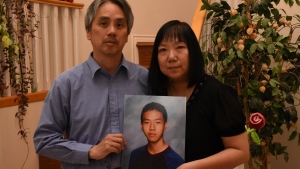The Indigenous Lens Program is making strides in introducing Indigenous youth to the film industry. This program, created by the National Screen Institute (NSI), aims to provide opportunities for Indigenous youth to explore and develop their skills in the film industry.
The program, which is in its second year, is open to Indigenous youth aged 18-35 from across Canada. It consists of a 12-week online course, followed by a two-week in-person workshop in Winnipeg, Manitoba. The online course covers various aspects of filmmaking, including screenwriting, directing, producing, and editing. The in-person workshop allows participants to put their skills into practice by creating a short film.
According to the NSI, the program received over 100 applications this year, with only 12 participants being selected. This year’s participants come from diverse backgrounds and represent various Indigenous communities, including First Nations, Métis, and Inuit.
One of the program’s main goals is to provide a platform for Indigenous voices and stories to be heard and seen in the film industry. As NSI Indigenous Training Programs Manager Ursula Lawson explains, “We want to give Indigenous youth the tools and skills to tell their own stories and share their perspectives on screen.”
The program also aims to address the lack of representation of Indigenous people in the film industry. According to a 2018 study by the Canadian Media Producers Association, only 0.3% of film and television production in Canada is led by Indigenous producers. The Indigenous Lens Program hopes to change this by providing opportunities for Indigenous youth to enter and excel in the film industry.
The program has already seen success in its first year, with one of its participants, Thirza Cuthand, winning the Best Short Documentary award at the 2020 imagineNATIVE Film + Media Arts Festival. Cuthand’s film, “Moose Meat & Marmalade,” explores the relationship between Indigenous people and food.
The Indigenous Lens Program is not only providing opportunities for Indigenous youth but also creating a supportive and inclusive community within the film industry. As participant and filmmaker, Katelyn LaCroix, states, “It’s really empowering to be in a space where everyone is Indigenous and everyone is supporting each other.”
The NSI plans to continue the Indigenous Lens Program in the coming years, with the hope of expanding it to include more participants and reach a wider audience. With the success and impact of the program, it is clear that the Indigenous Lens Program is making a significant contribution to the film industry and the representation of Indigenous voices and stories.



